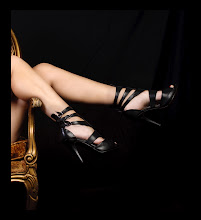 Thought for the day: Everything has its beauty, but not everyone sees it--Confucius
Thought for the day: Everything has its beauty, but not everyone sees it--ConfuciusAbout a week ago, friends of ours came over for dinner. As our conversation--fueled by a delicious red wine--ricocheted and bounced from one subject to another, it ultimately settled on what is probably one of the most controversial subjects in portrait photography. Digital editing.
The husband who, by the way, happens to be a minister, felt that digital editing misrepresented the truth, distorted reality, presented a lie.
Now, as a woman, I can relate to his perspective. I, like most women, can remember all too well how I used to feel as a young girl as I flipped through magazines and studied the beautiful, skinny girls with perfect skin and perfect smiles. Why can't I look like them? was always the question in my mind. It wasn't until I was older, much older, that I learned the extent to which editing plays a role in shaping our general idea of "perfection." And even though I don't have any daughters, I'm eternally grateful--as a mother and as a woman--to those rogue magicians of the modeling world--people like Tyra Banks, who openly exposes the beauty industry for all its magic tricks. Surely, use of digital methods to lengthen limbs, erase skin imperfections or even change the contours of a person's features are all practices that inadvertently set the bar sky-high for young girls in their struggle to achieve perfection and supermodel looks.
The virtually unattainable image of beauty is dangerous for young girls and women. And I get that. It is for this reason that some portrait photographers choose not to use digital tools at all in their work.
To be fair, I should also mention that the minister has two daughters. But over the course of our dinner, I nonetheless politely disagreed with my minister-friend that all digital manipulation is evil.
And here's why.
I view my work as an approach to art, to storytelling. When I sit down to write a chapter of a book, or an article, I ask myself "What's the main idea?" Likewise, for each photo I review, I ask "What's the main focus of this image?"
For example, take the photo accompanying this post. A beautiful girl. Naturally great skin. Yes, she had a few beauty marks on her face and this was originally a 3/4 body shot. But as I reviewed the 300+ images from our session, I paused when I saw the intensity in her eyes in this one. That look in her eyes was, to my eye, the most compelling part of the image. My goal then, for that particular image, was to make those eyes, that look, the main focus. So I cropped it in tight. And I removed the beauty marks from her face.
If I'd left the image as a 3/4 shot, the image would have been less effective. If I'd left the beauty marks, they would have competed for attention and distracted the viewer from those eyes.
Now, I have to pause to say this: I always ask a model beforehand about their preference for digital retouching. I recognize that beauty truly is in the eye of the beholder. And I'd never want to make the terrible mistake of communicating the idea that a feature or trait a particular model has is less than perfect by editing it out. In this case, the aspiring model/actress had indicated a preference for removing the beauty marks, and for this particular image I found it helped to solidify the desired focus.
My minister-friend narrowed his eyes at me as I attempted to explain my position on the subject: portrait photographer as storyteller. He wasn't immediately buying it. "So, if you photographed Nelson Mandela, for example," he said, "you'd take out all his wrinkles?"
I laughed. "Absolutely not!" In my mind, Mandela's wrinkles could serve as an amazingly poetic vehicle for telling his story. The lines of his face mapping the amazing journey the man has taken over the course of his life... I told this to the minister. But I still wasn't sure he understood my perspective.
In any case, I remain resolute in my opinion that digital retouching, when used with a caring and tender hand, can be a powerful tool to convey a great idea, tell a wonderful story, paint a beautiful picture, capture the true essence of a person. Would I ever use it to narrow someone's thighs or change the structure of their face? Just for the heck of it? Most likely not.
But...if I was asked to do so in the interest of reclaiming a figure or feature that motherhood, time, or stress had somehow modified, I might. Those are each valid stories. And every picture has its own story to tell.
Warmly,
Susan
www.liartphotography.com
Remember the thought for the day: Everything has its beauty, but not everyone sees it--Confucius

No comments:
Post a Comment